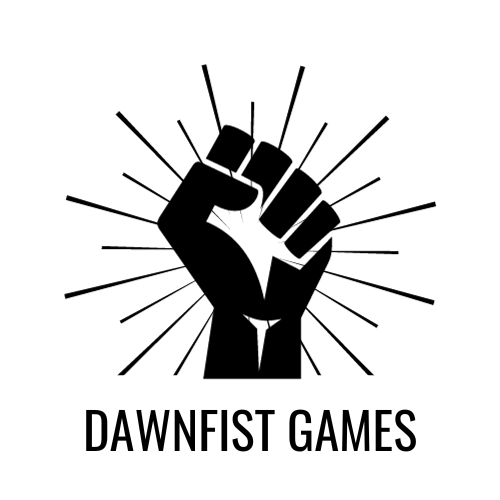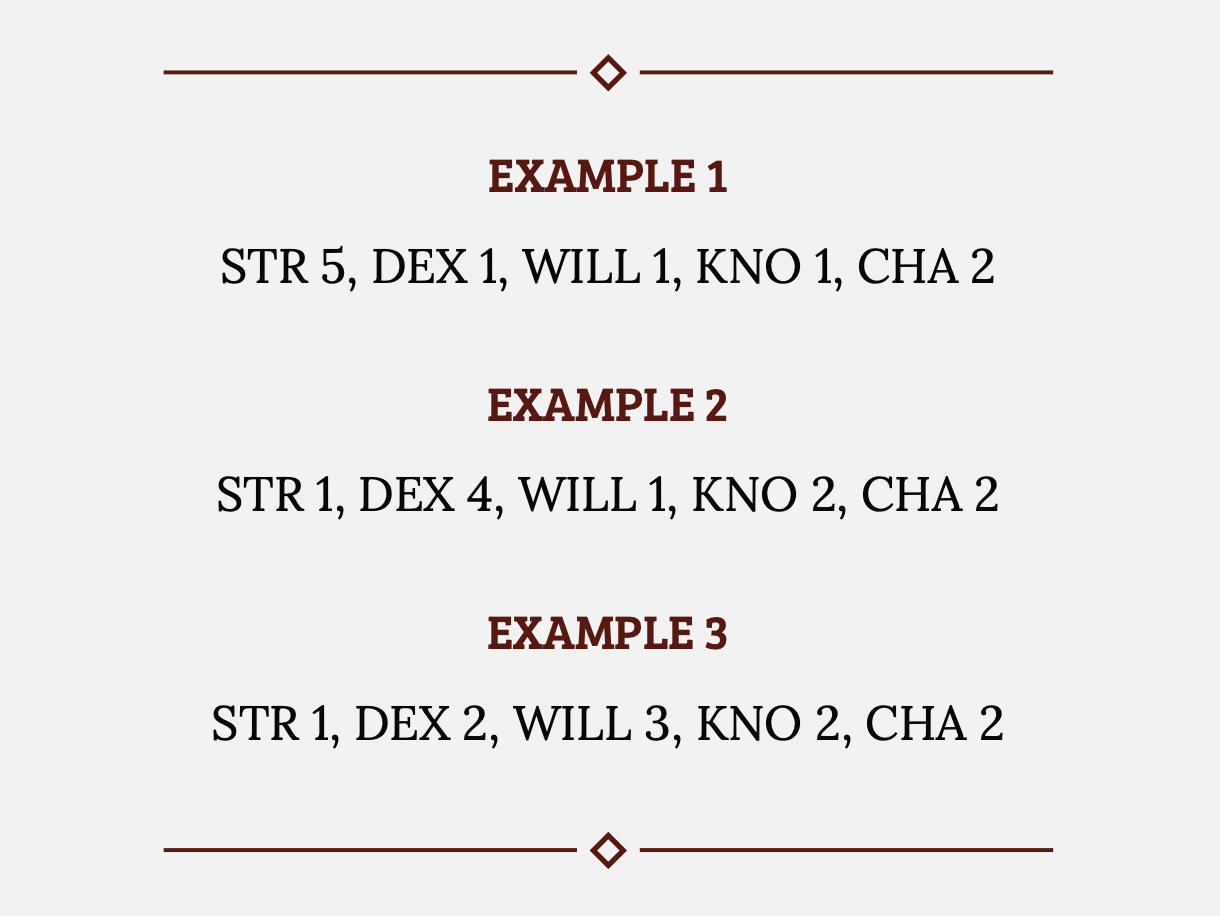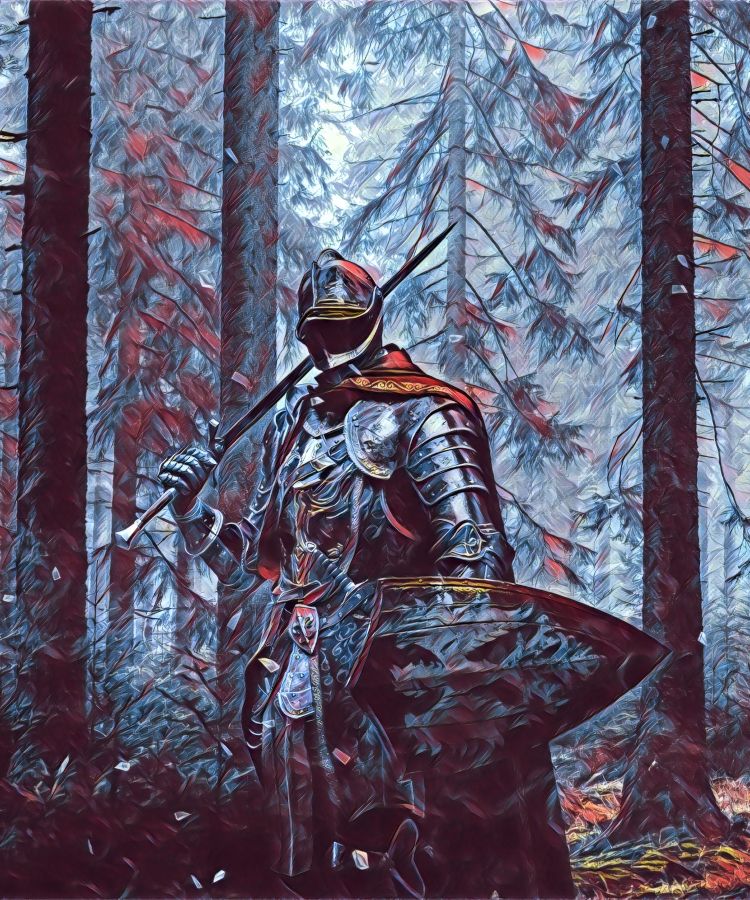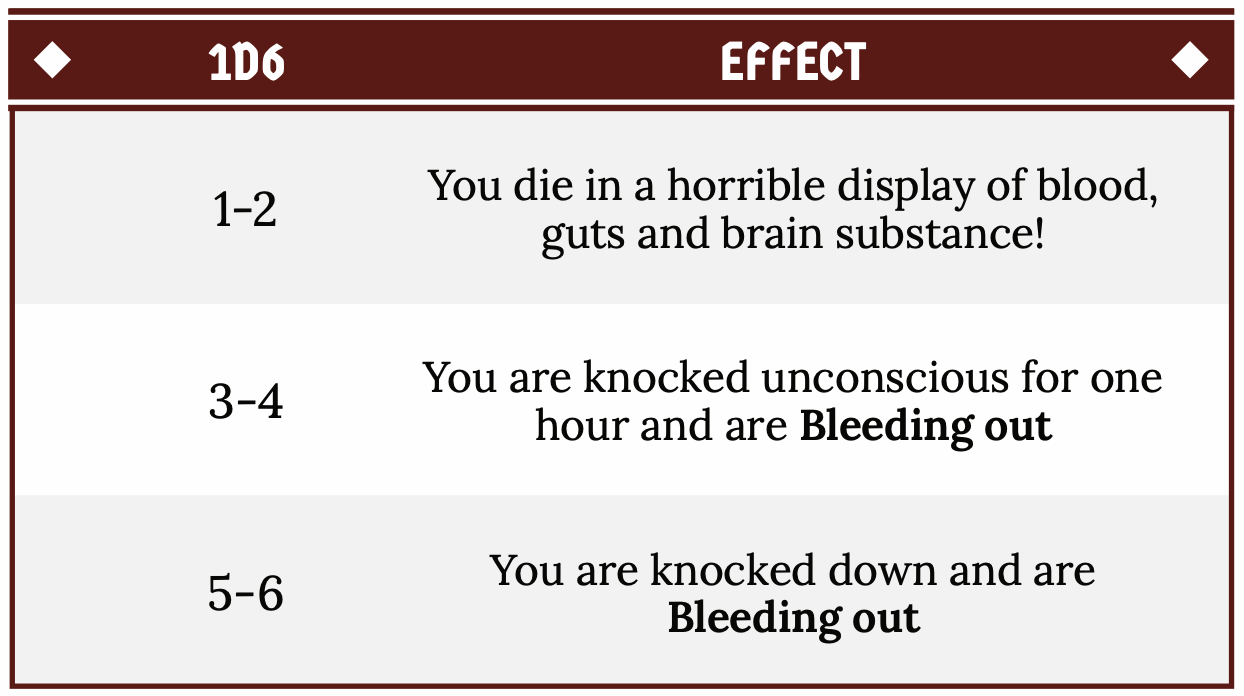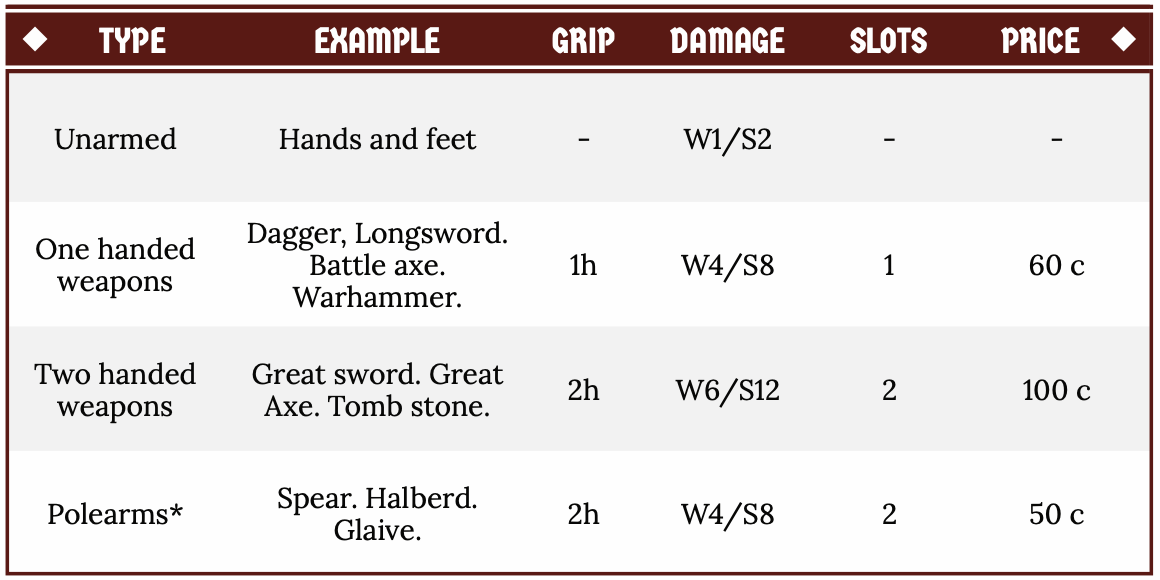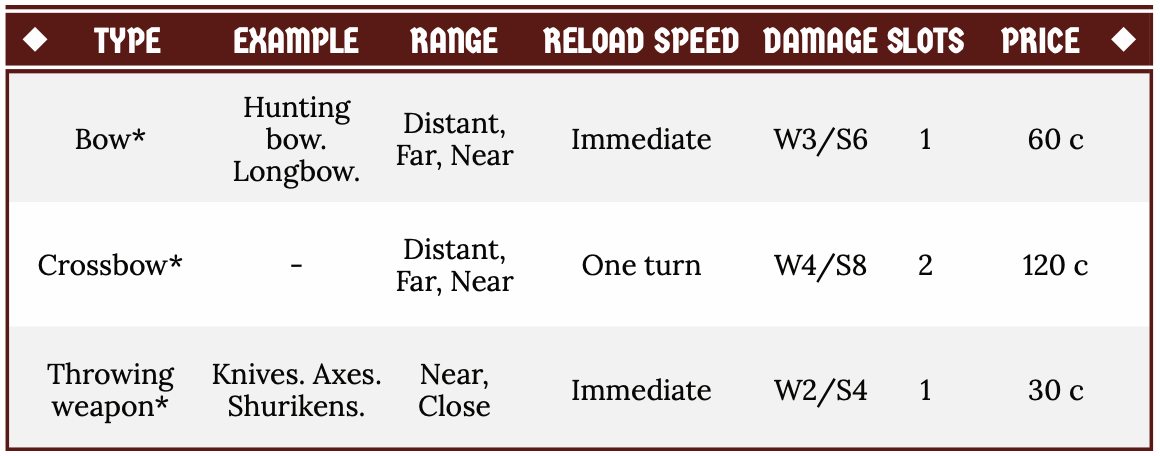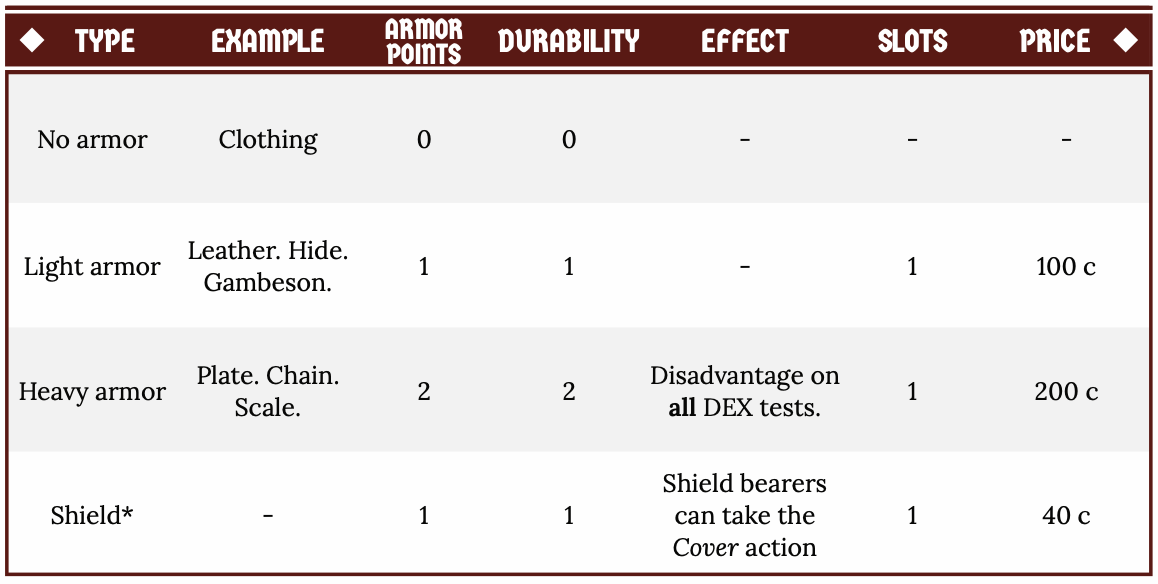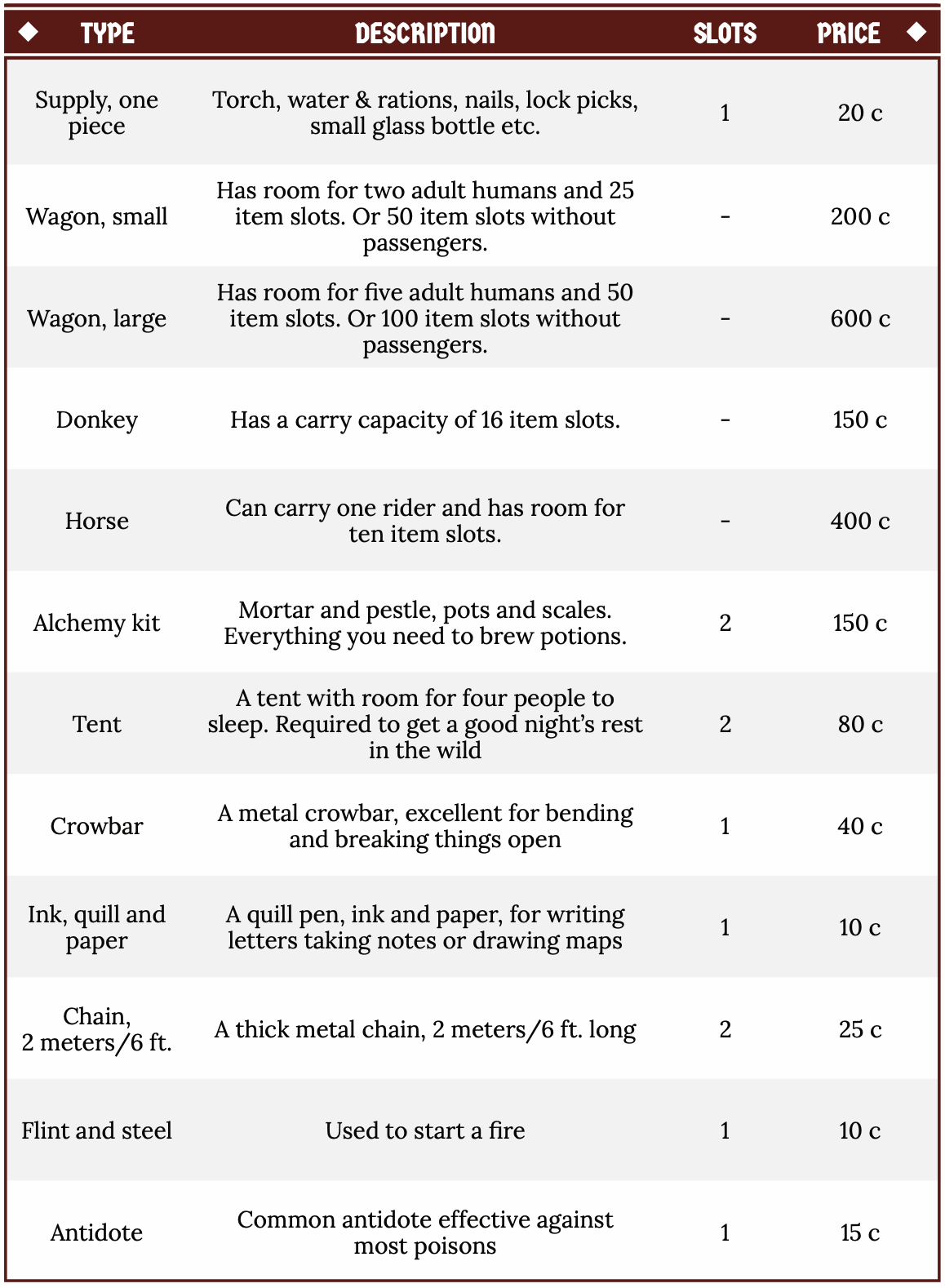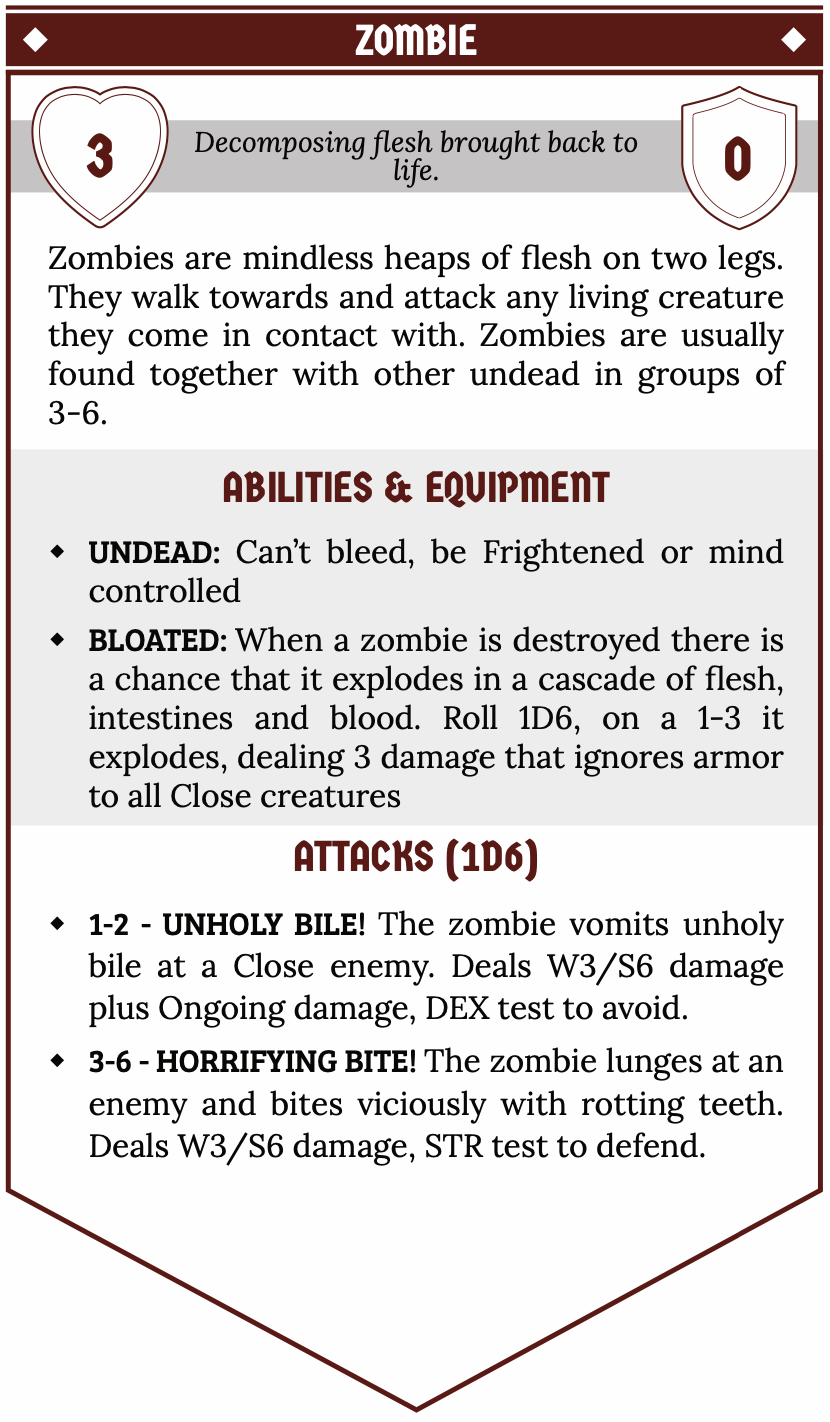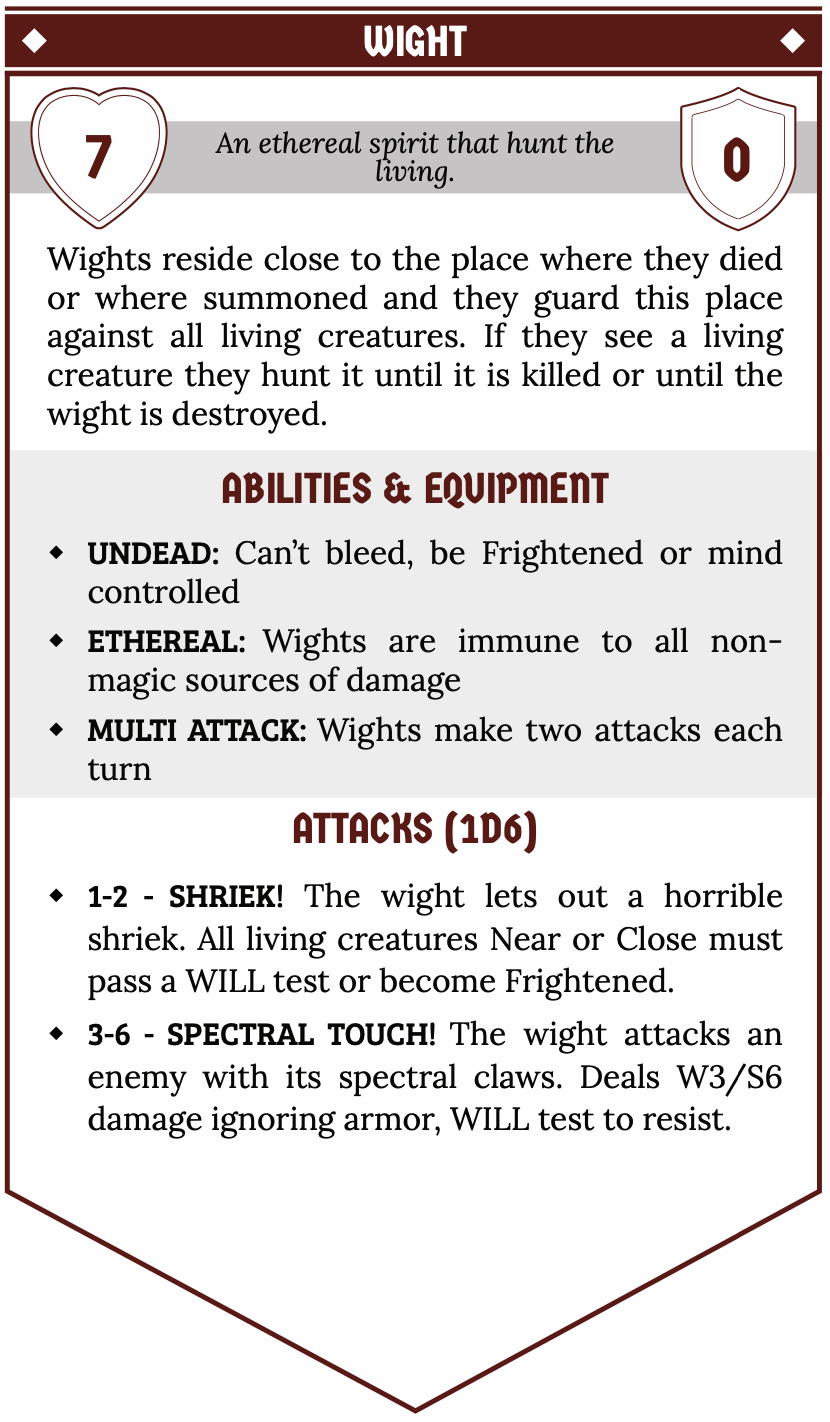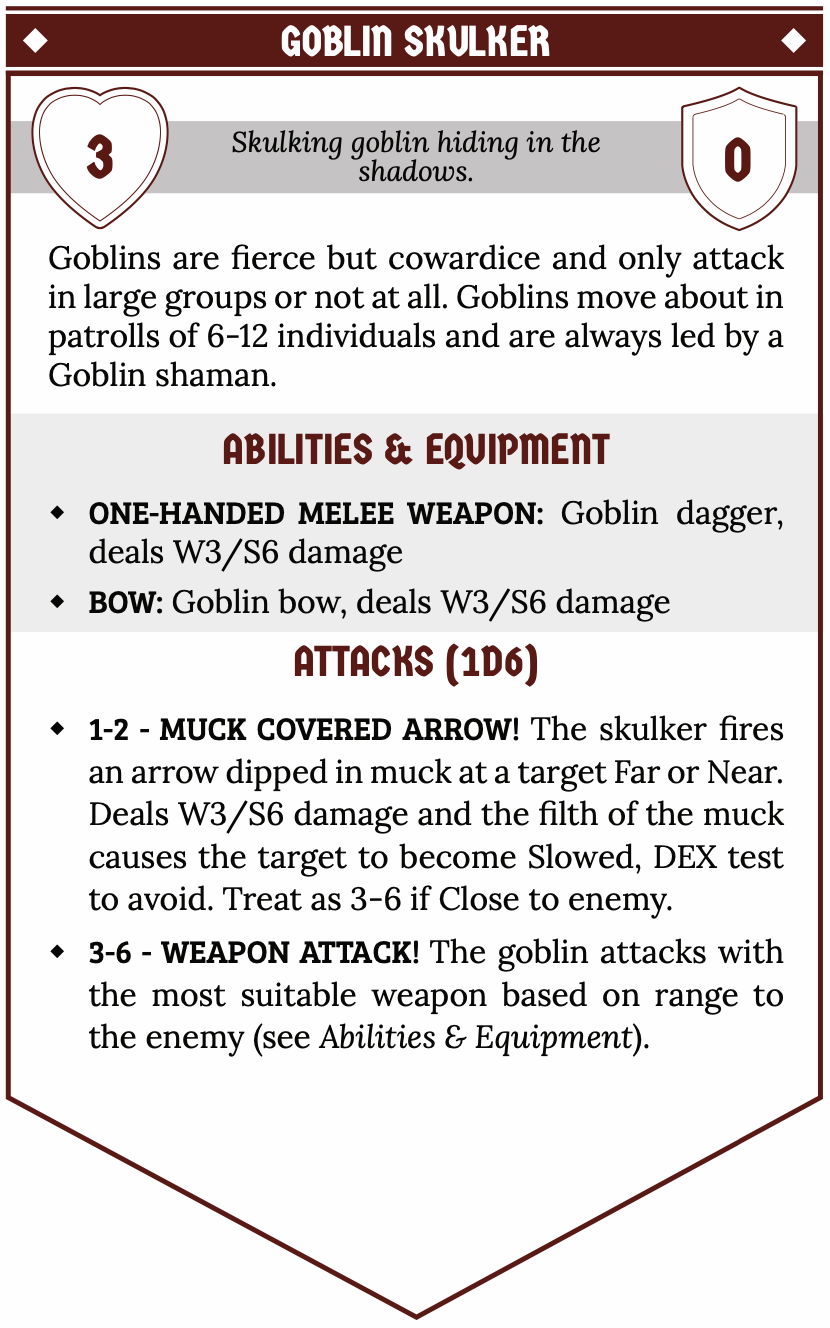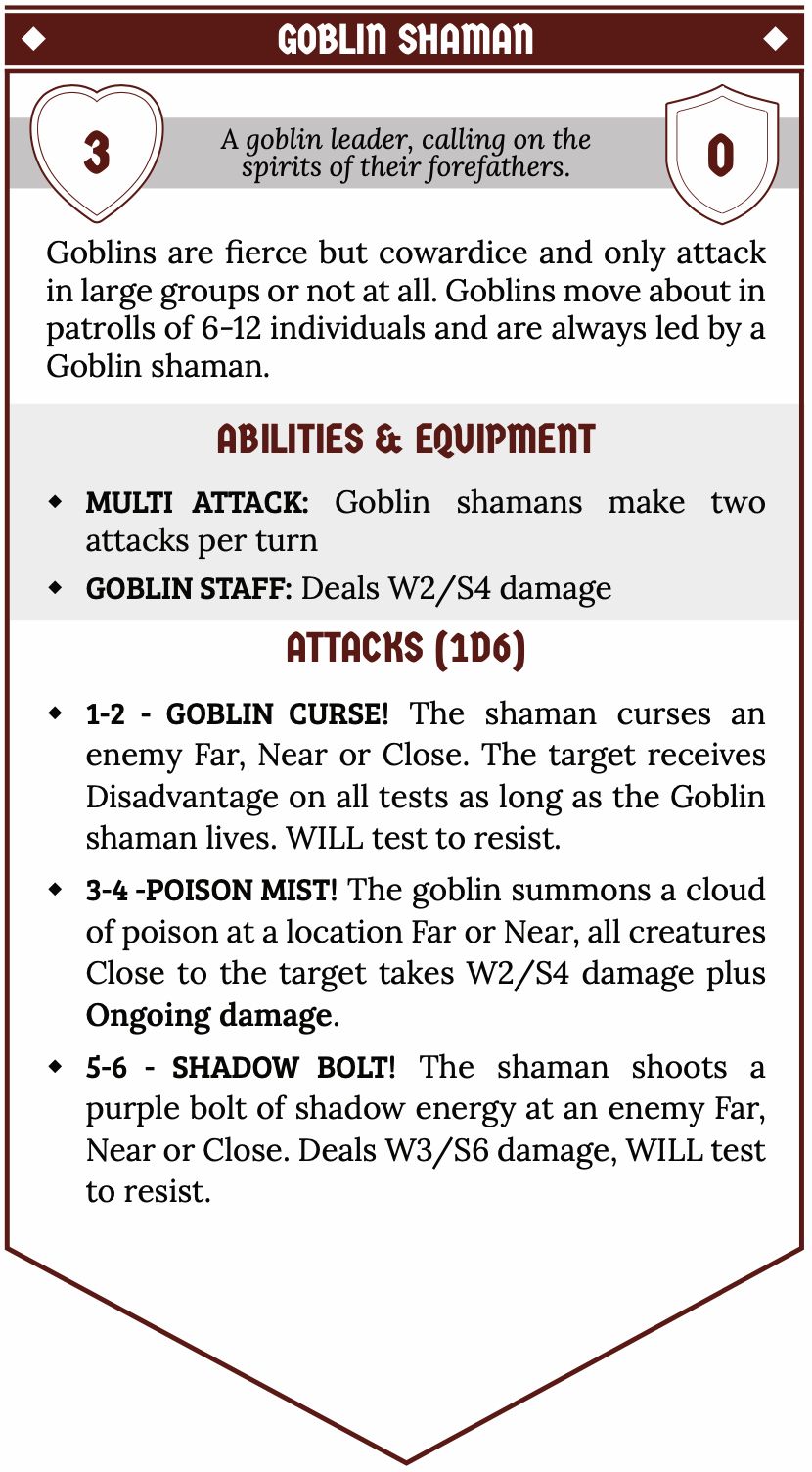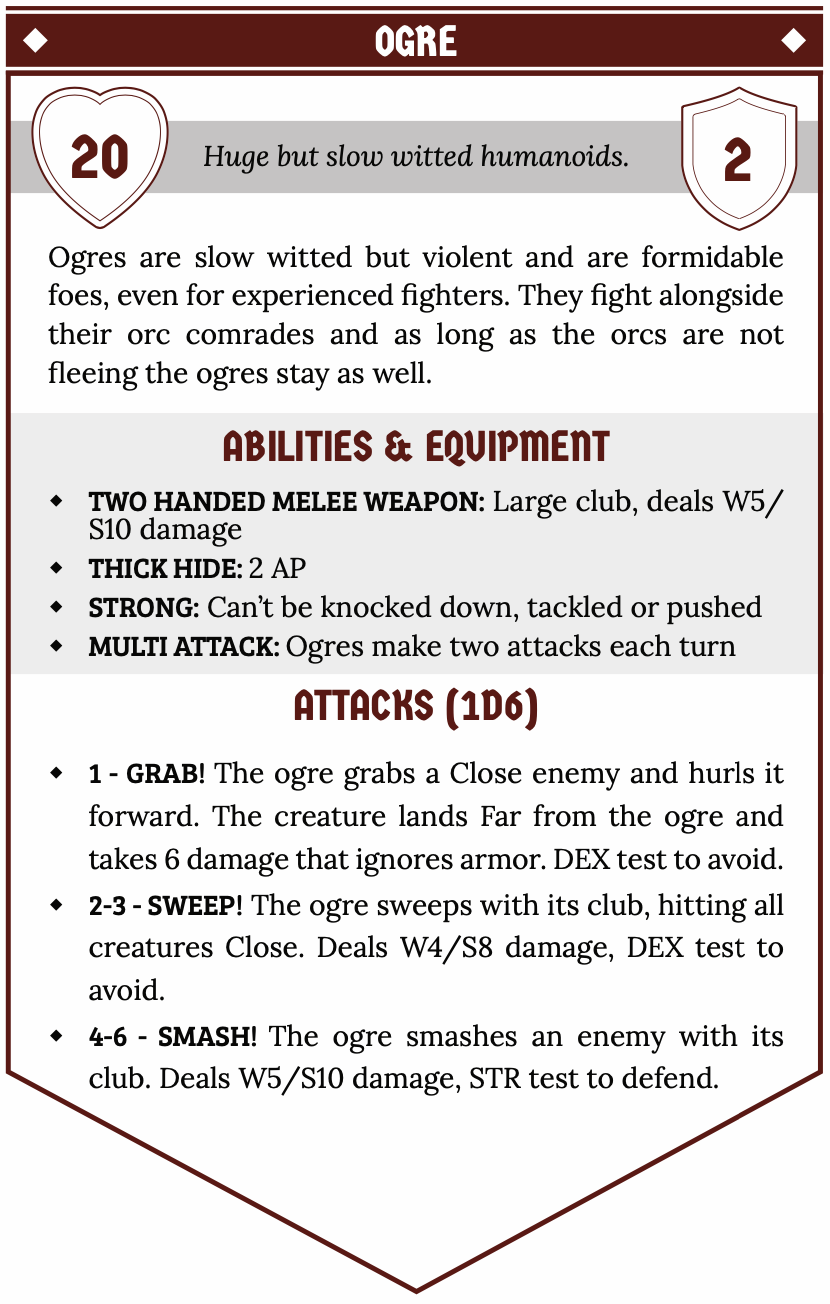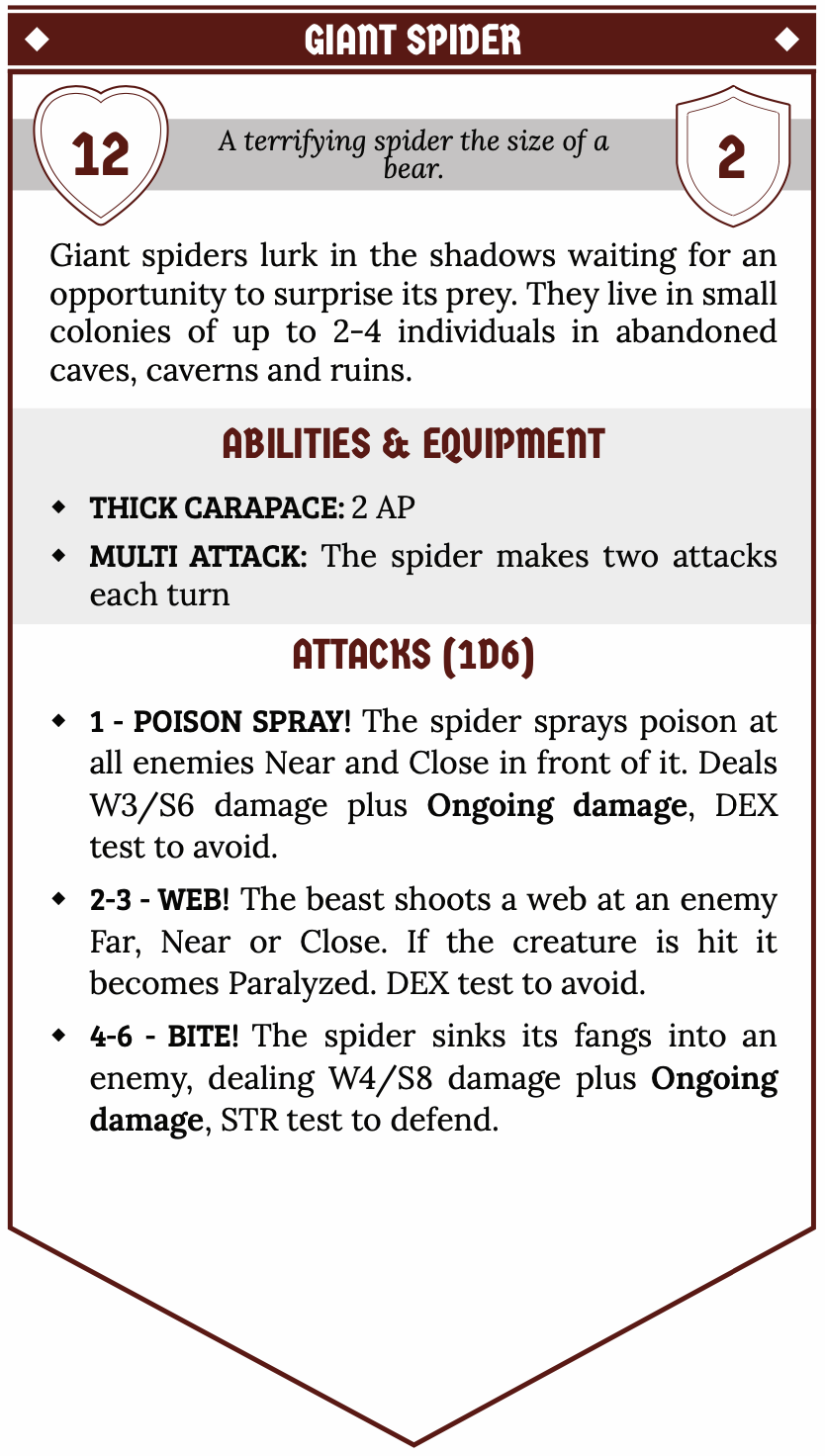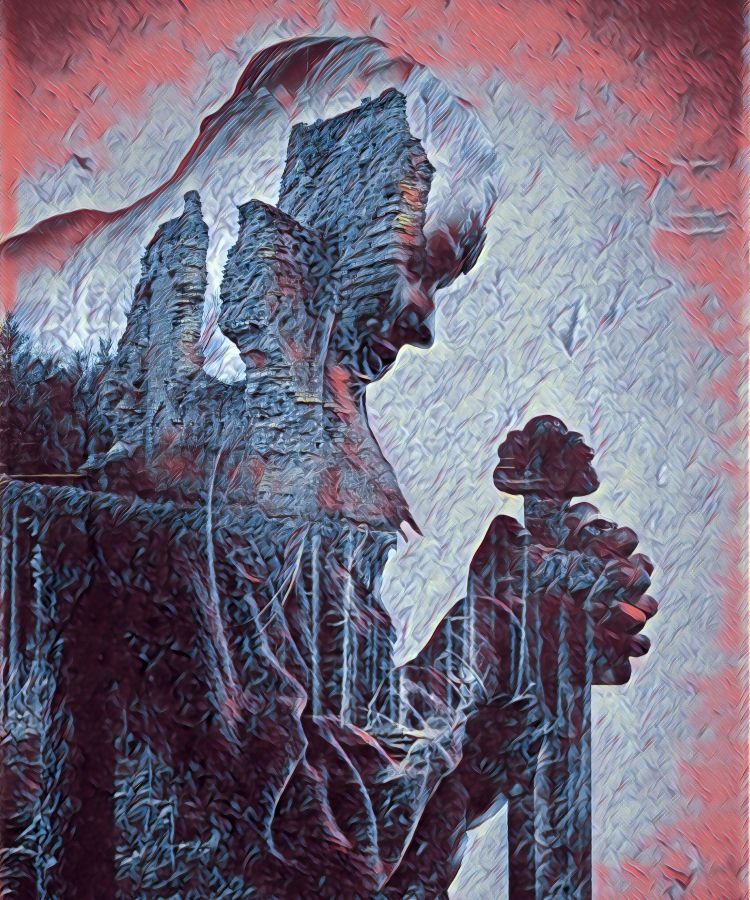Combat
Combat is commonplace for adventurers exploring lost tombs and dark caves.
Here are the rules describing everything from attacking and defending to moving around on the battlefield and conditions that might affect a character.
Rounds and turns
Combat is divided into rounds. Each participant gets one turn each round. One round is roughly six seconds long and in the fiction all individual turns during a round play out pretty much simultaneously, even though they are handled separately.
Initiative
When combat starts all players make a KNO test, PCs that succeed act before the opponent, PCs who fail their KNO test act after the opponent.
This process is repeated at the start of each round, meaning that a PC or the opponent can sometimes act twice in a row depending on the outcome of the KNO tests.
Actions and moves in combat
Each turn a creature get to make one action and one move. If a creature wants to make a Move, it must always come before the Action.
- An action can be attacking with your weapon, using a class ability, drinking a potion or pushing a boulder down a hill.
- A move is moving from one zone to the next, hiding behind cover, climbing a short ladder or a similar change in position.
A creature can choose to make two moves and move two zones in one turn, but this means forfeiting their action.
Distance and movement
Distances are measured in four abstracted zones.
- Close – You can reach the target with just a few steps (up to 5m/15 ft.)
- Near – You can reach the target with a few quick strides (up to 20m/65 ft.)
- Far – You can see the target’s facial expression (up to 50m/150 ft.)
- Distant – You can see the target’s hair color (up to 100m/300 ft.)
During its turn a creature can move to a location that is Near AND make an Action, or move two zones but not take an Action. Movement in difficult terrain such as swampland, debris and when climbing is halved. To move one full zone in difficult terrain the creature has to forfeit their action to make two moves.
Reach and range in combat
To attack a creature in melee the attacker needs to be Close to it. A creature can generally attack any Close creature without using it’s move.
When using ranged weapons and abilities the reach is listed in the item or ability description.
Targets
Some attacks and abilities only affects allies, others only affect enemies and some abilities affect all creatures. Unless otherwise stated all abilities that affect allies and/or creatures can also target the caster as well, such as the Cleric ability “Bless”.
